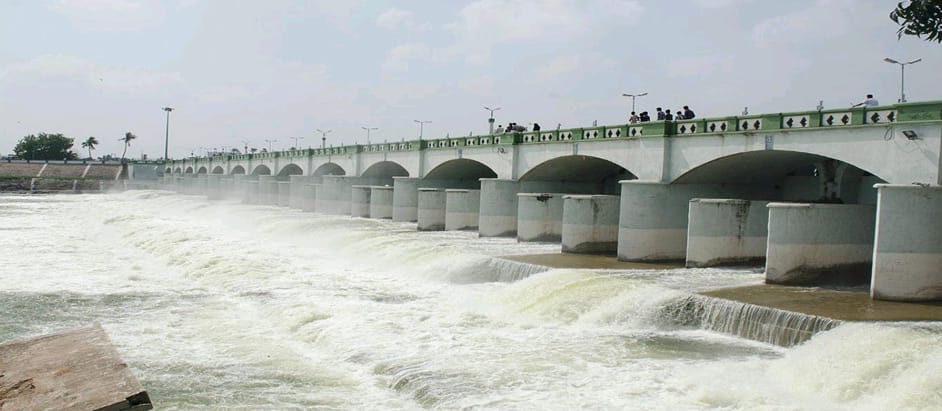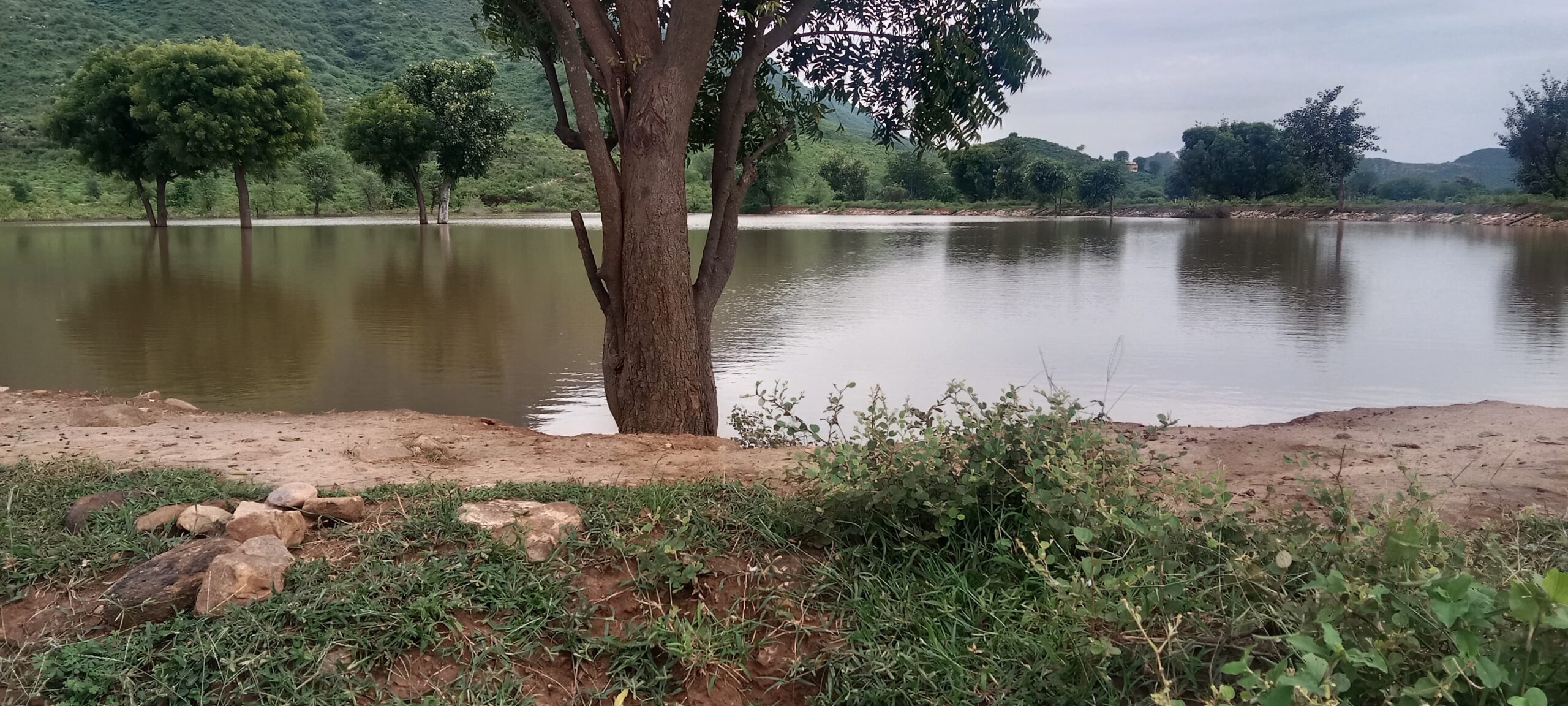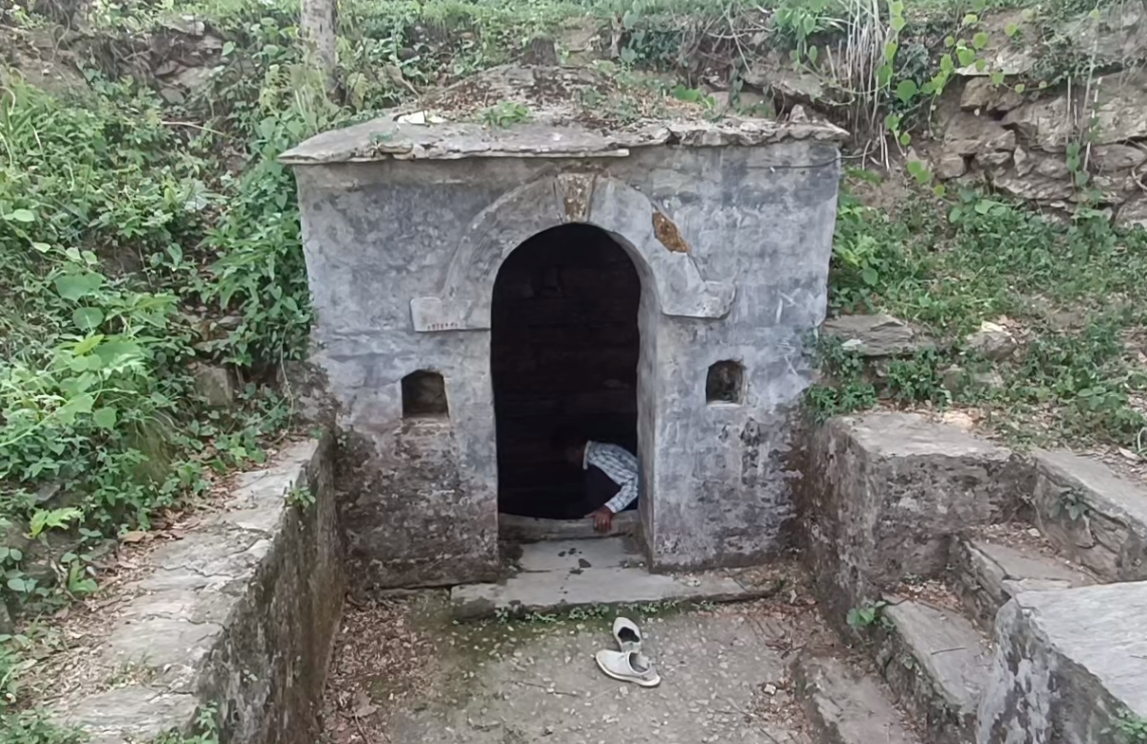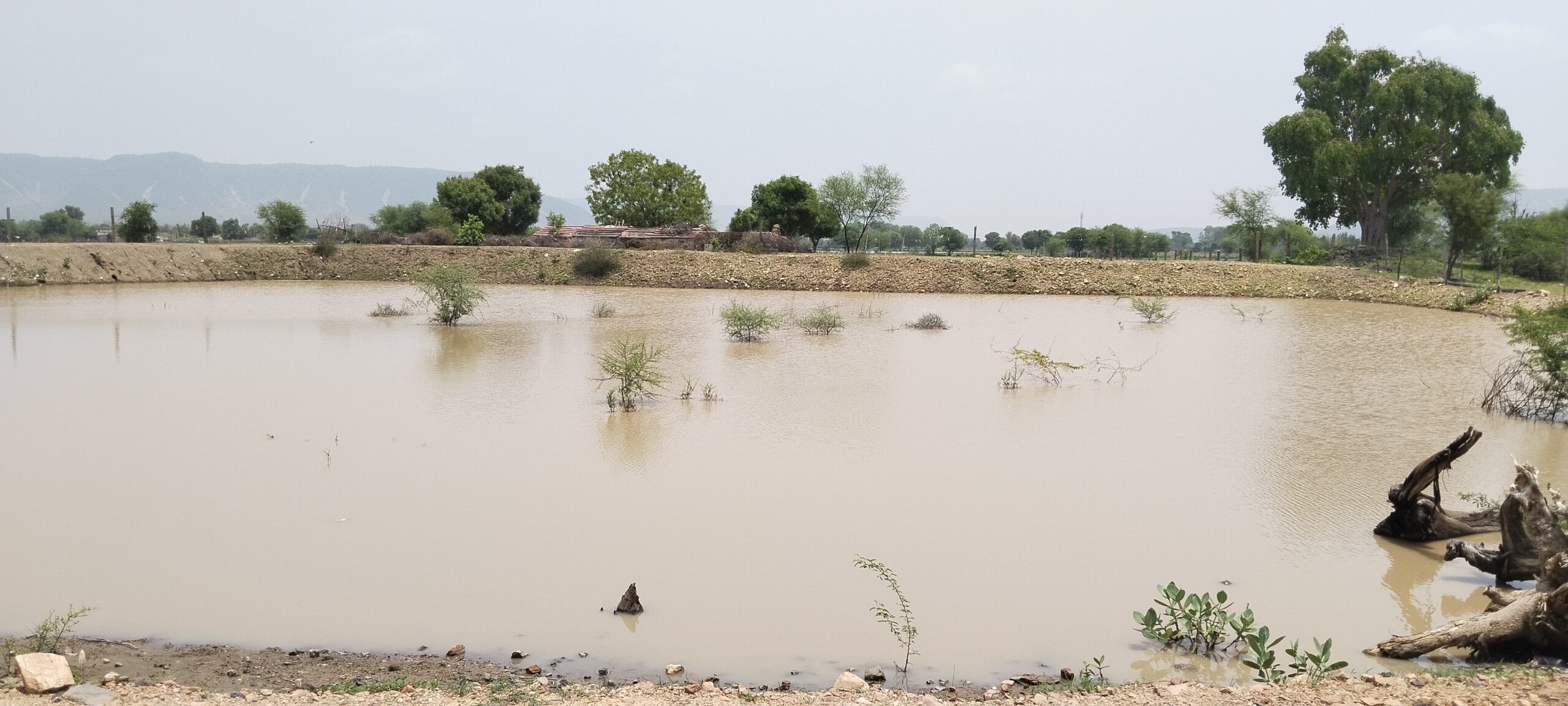Rainwater harvesting refers to the collection and storage of rain. The collected water can be used for domestic, agricultural, or other purposes. It can also contribute to groundwater recharge. Although rainwater harvesting was widespread in India for millennia, traditional methods for rainwater harvesting declined in the 19th and 20th centuries. Urbanisation has led to further disruption in these rainwater harvesting techniques. Today, it is estimated that only 8% of rainwater is collected. When rainwater is not stored, it is wasted as runoff. It might cause erosion and flooding, and pollute water bodies if it is contaminated. [1]
Water Stress in Tamil Nadu
Tamil Nadu has high water stress and more than a third of its groundwater sites are over-exploited. [2], [3] The per capita availability of water in the state was estimated to be just 900 cubic metres per year which is less than the threshold for water scarcity. [4] Thus, rainwater harvesting has huge scope for improving water security and access in the state.
In 2001, Tamil Nadu became India’s first state to mandate rooftop rainwater harvesting. [5] However, like most places across India, it has a rich history of rainwater harvesting and management spanning thousands of years.
The people of Tamil Nadu have since long appreciated the importance of rain. The ancient Tamil poet Tiruvalluvar has a chapter on rain in Tirukkural, which contains the following lines: [6]
“The world its course maintains through life that rain unfailing gives;
Thus rain is known the true ambrosial food of all that lives.
If from the clouds no drops of rain are shed
‘tis rare to see green herb lift up its head.”
During the Sangam period, rainwater was harvested by farmers for irrigation. Since, most rivers of the region are not perennial, several water management techniques were used in the forms of tanks (tatakas), dams, canals, wells, lakes, and bunds known as ‘Eris.’ [7][8] An Eri or Yeri is a lake which consists of earthen embankments and acts as a catchment area for river water or rainfall. Yeris are of two types: one which are connected to a system of other water bodies and the other, stand-alone rain-fed embankments. [9]
Traditional Water Management Network of Tamil Nadu

The water management network historically present in the state includes the river water flowing into smaller water bodies. These smaller water bodies recharged the ground water and maintained water level in wells. The network is summarised as follows: [9]

A Kanmai is a artificial reservoir with gullies. Karanai usually refers to a wetland and Thaangal is a small man-made irrigation reservoir. Yenthal is a water body that stores rainwater, Oorani is a tank or well that stores drinking water, while Kulam is a pond used for bathing. Finally, Kutai is a small reservoir for rainwater.

Veeranam Eri or Lake is a great example of a human-made water harvesting structure. It was built under Rajaditya Chola in 10th century CE in Cuddalore, Tamil Nadu. It is 14 km long and is considered the longest artificial lake in the world. It receives water from Kollidam via Vadavaru river and also stores rainwater. [11]
Temple Tanks of Tamil Nadu
Other than earthen bunds in the form of Yeris, water harvesting was also widespread in the form of tanks (tatakas). Kovil Kulam are temple tanks, often with steps, built near numerous temples in Tamil Nadu. They are well connected with other water bodies and store rainwater. [9] Some examples include:

Shivaganga Tank: Rainwater from the Brihadeeswara temple, Balaganapathy Nagar, Thanjavur was collected in Shivaganga tank. [12] The temple was constructed in around 1010 CE by the Chola king Rajaraja Chola I. [16]

Haridra Nadi adjoins Rajagopalaswamy Temple in Mannargudi. It is believed to be built under Kulothunga Chola I, in the 10th century. It is one of the largest temple tanks in the world. [17]

Vandiyur Mariamman Teppakulam in Madurai was built in 1645 CE during the reign of Thirumalai Nayak. [18]

Kapaleeshwarar Tank or the Mylapore Tank in Mylapore adjoins the Kapleeshwar temple which is believed to be built by the Pallavas in the 7th century. [19]
Historical Water Management Structures
Apart from these, dams in Tamil Nadu, built hundreds of years ago are still standing and in use.

- Kallanai or Grand Anicut is a dam on river Kaveri in the Thanjavur district of Tamil Nadu. It was built around 1st century CE by the Chola King Karikala and is considered the one of the oldest water regulation structures in the world. Its purpose was the irrigation of crops. [10]
- Kalingarayan Anicut is a dam built in the 13th century under Kalingarayan in Erode, Tamil Nadu. It is another example of an enduring ancient water management structure. [13]
These traditional methods and historical structures teach us about the potential of rainwater harvesting to prevent a host of problems including water scarcity, excessive groundwater depletion, water pollution and land degradation. Experts have also suggested that traditional rainwater harvesting methods could be used for more sustainable agriculture and climate change adaptation. [14]
More work is needed and we can all play a role in ensuring sustainable water resources are created and maintained. Indigenous knowledge and the cooperation of local communities can rejuvenate traditional methods of rainwater harvesting while also supporting modern solutions.
References
- Rainwater Harvesting, CMWSSB, Tamil Nadu: https://cmwssb.tn.gov.in/rwh-WhatWhyHow
- Composite Water Management Index, NITI Aayog, 2019, https://www.niti.gov.in/sites/default/files/2023-03/CompositeWaterManagementIndex.pdf
- National compilation on Dynamic Water Resources of India, 2024, https://cgwb.gov.in/cgwbpnm/public/uploads/documents/17387543101433268167file.pdf
- Tamil Nadu ENVIS: http://tnenvis.nic.in/database/tn-envis_791.aspx
- Rainwater Harvesting, Tamil Nadu State Government: https://www.tn.gov.in/dtp/rainwater.htm
- TM Srinivasan, Agricultural Practices as gleaned from the Tamil Literature of the Sangam Age, Indian Journal of History of Science, 51.2.1 (2016) 167-189 https://www.insa.nic.in/writereaddata/UpLoadedFiles/IJHS/Vol51_2016_2_1_Art01.pdf
- Government of Meghalaya: https://megphed.gov.in/rainwater/Chap2.pdf
- Monsoon Harvests: The Living Legacies of Rainwater Harvesting Systems in South India, Kimberly J. Van Meter, Nandita B. Basu, Eric Tate, and Joseph Wyckoff, Environmental Science & Technology 2014 48 (8), 4217-4225, DOI: 10.1021/es4040182
- Water management practiced by 1000 years old Chozha dynasty in Tamil Nadu, India – A review, Poongodi Kolandasamy; Murthi Palanisamy, AIP Conf. Proc. 2971, 040044 (2024), https://doi.org/10.1063/5.0195848
- The Hindu Article on Kallanai: https://www.thehindu.com/news/cities/Tiruchirapalli/a-rock-solid-project-that-has-survived-2000-years/article4491152.ece
- Cuddalore Tourism: https://cuddalore.nic.in/tourist-place/veeranam-lake/#:~:text=Veeranam%20Lake%20%3A%20Veeranam%20Lake%20(Veeranarayanapuram,of%20Tamil%20Nadu%20inSouth%20India
- Tamil Nadu Water and Drainage Board, Rainwater Harvesting History https://www.twadboard.tn.gov.in/rain-water-harvesting-rwh#:~:text=History,the%20art%20of%20water%20management.&text=In%20ancient%20Tamil%20Nadu%2C%20rainwater,was%20collected%20in%20Shivaganga%20tank.
- The Hindu Article on Kalingarayan Anicut: https://www.thehindu.com/todays-paper/tp-national/tp-tamilnadu/Kalingarayan-Canal-is-725-years-old/article14706944.ece
- Pandey, D. N., Gupta, A. K., & Anderson, D. M. (2003). Rainwater harvesting as an adaptation to climate change. Current Science, 85(1), 46–59. http://www.jstor.org/stable/24107712
- Image Credit: First Image from Wikimedia Commons, Author: Yercaud-elango, Second Image from Wikimedia Commons Author: Beckamrajeev, Third Image from Wikimedia Commons, Author: Kailash Sugumaran, Fourth Image from Wikimedia Commons, Author: பா.ஜம்புலிங்கம், Fifth Image from Wikimedia Commons, Author: Ssriram mt, Sixth Image from Wikimedia Commons, Author: எஸ்ஸார், Seventh Image from Wikimedia Commons, Author: Nsmohan
- Tamil Nadu Tourism: Brihadeeswara Temple, https://www.tamilnadutourism.tn.gov.in/destinations/brihadeeswara-temple
- The Hindu Article on Haridra Nadi: https://www.thehindu.com/features/friday-review/history-and-culture/Dwaraka-south-of-Vindyas/article16138741.ece
- Tamil Nadu Tourism, Vandiyur Mariamman Teppakulam, https://www.tamilnadutourism.tn.gov.in/destinations/vandiyur-mariamman-teppakulam
- V., Subburaj (2006). Tourist Guide to Chennai. Chennai: Sura Books. ISBN 81-7478-040-8.
- CC Link: https://creativecommons.org/share-your-work/cclicenses/








Leave a Reply